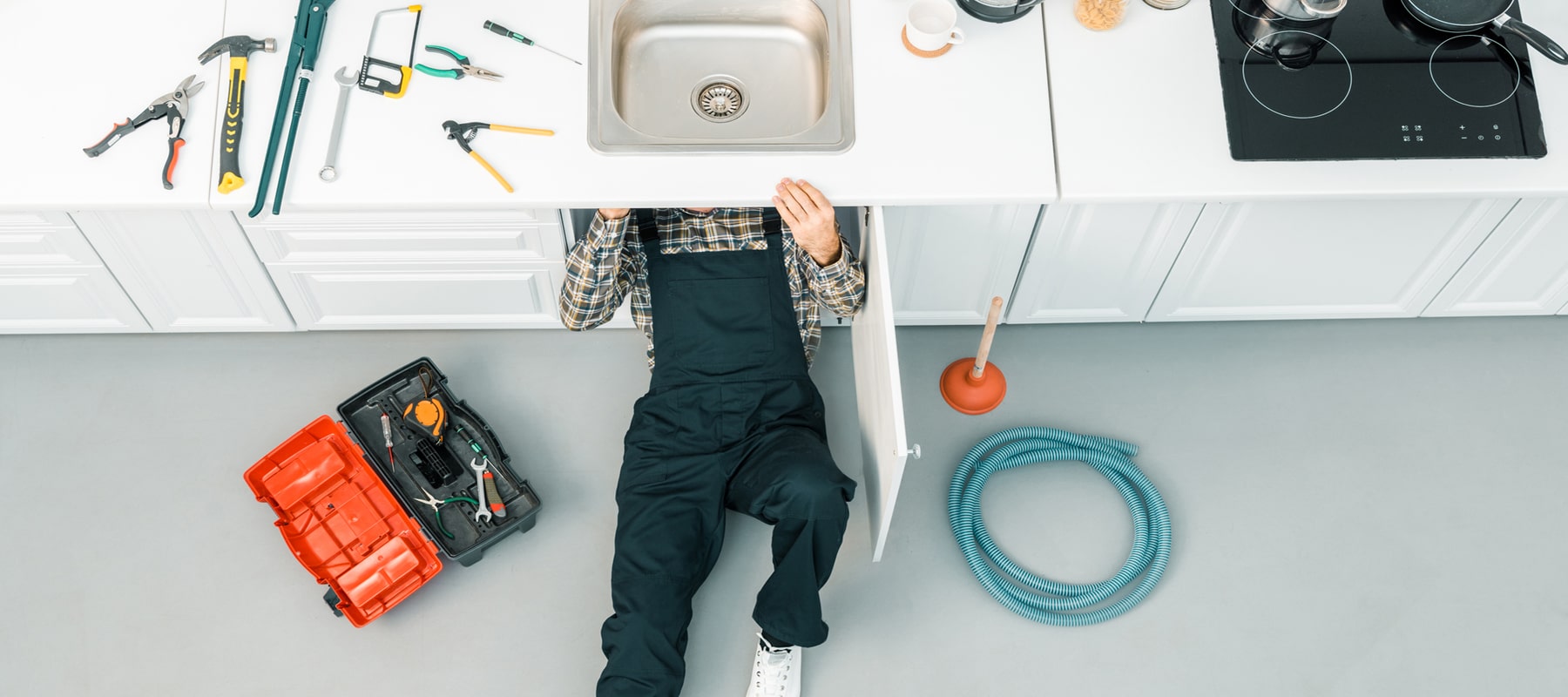How Much Does it Cost to Install New Plumbing Pipes?
Last Updated: January 21, 2022
On This Page
Installing new plumbing is a significant investment. Delaying the project, however, could result in home flooding that is as costly, if not more costly, than the plumbing itself. New pipe technology, furthermore, means that you don't have to spring for costly copper piping.
Do I Need to Replace My Plumbing? #
If you live in a home that's 50 to 100 years old, the pipes could be nearing the end of their service life. Brass, copper, cast iron, and galvanized steel pipes all have an estimated lifespan of around 75-100 years. While piping can certainly last longer than this, it can also fail sooner if it isn't properly maintained and/or you have hard water. Eventually, though, all pipes will corrode to the point of failure. Signs of corrosion include discoloration, staining, flaking, and other marks on the outside of the pipes or around fittings, as well as brown/yellow/brackish water. Inspect the exposed piping of your older home at least once per year and if you notice any trouble spots, call a local plumber for an evaluation.
Low water pressure and leaking pipes are also signs of corrosion. When a leak is found in one pipe, it's often (but not always) a sign that the entire plumbing system is starting to show its age. Again, you should schedule an appointment with a plumber to be on the safe side.
Finally, there are two types of plumbing pipes that should be replaced regardless of their age or condition: lead pipes and polybutylene pipes. Lead, as you probably know, poses serious health risks, especially for young children, while polybutylene has a history of premature failure.
Plumbing Pipe Considerations #
You shouldn't move ahead with new plumbing until receiving confirmation from a plumber that pipe replacement is indeed necessary. Faced with the prospect of replacing plumbing lines, keep the following points in mind:
- One of the biggest costs of pipe replacement is opening up the walls and floors. This can be reduced or even eliminated by installing new piping during a renovation, when walls and floors are already exposed.
- Demolition costs can also be reduced by installed PEX (polyethylene) pipe rather than copper pipe. PEX is flexible, so it can be fed into the walls without opening them up. This isn't possible with inflexible copper pipes.
- Not only installation costs, but also material costs, are lower with PEX pipe. On average, PEX piping costs half of what copper piping does.
- Another way to save money on plumbing installation is to only replace exposed pipes (i.e. those that don't require demolition to be accessed). In some homes, most of the plumbing pipes are exposed.
- Despite the promise of PEX pipe (it's predicted to last 50 years, typically comes with a 25 year warranty, and is more energy efficient and burst-resistant than copper), the material has only been in use for about ten years, and therefore doesn't have a proven performance record. In addition, some homeowners and environmentalists have reservations about the healthiness of plastic piping (unfounded at this point, but the long-term safety of any new product is a gray area).
- By selling your old metal piping for scrap you'll be able to recoup some, if not most, of the cost of new plumbing.
Plumbing Pipe Average Costs #
- Replacing the existing plumbing with copper pipes in an average-sized, 2-batroom home costs $7,500 to $15,000.
- Using PEX pipes for the same project can reduce costs by around half ($4,000 to $8,000)
- PEX piping costs around $.50 to $2.00 per foot, while copper piping averages $2 to $4 per foot.
- Replacing only exposed piping can reduce the project cost by as much as 50 to 60 percent. Pipe replacement during a renovation results in even greater savings.
- The actual cost to install new plumbing depends on a number of factors, including home size and height (the number of stories), the number of fixtures (every sink, toilet, shower, dishwasher, etc. counts as a fixture), the amount of demolition required, ease of pipe access, the piping material, and local labor and material costs.
- In some cases, wall repair (following demolition) costs extra, and you may even need to hire a painter to patch holes.
